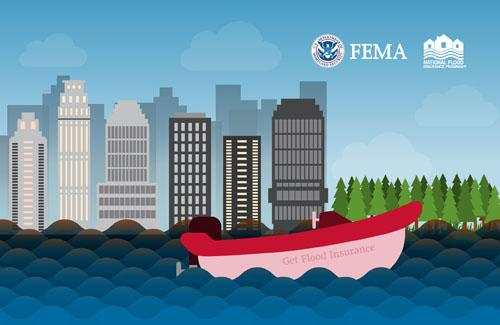Flooding is a natural disaster that can strike at any time across the nation, often without warning. While the immediate threat of floodwaters is often the immediate danger people think of, the aftermath of a flood can be just as challenging for people.
Rebuilding after disasters is emotionally challenging and can be incredibly costly. That's why it's crucial you can guide your clients through the steps they can take to protect their homes and ease the recovery process.
Flooding Happens Everywhere
In 2017, heavy rain and snowmelt drove floods in Bingham County and mudslides in Magic Valley, Idaho, that forced residents to evacuate. Even Idaho's panhandle saw the impact of winter weather, as it experienced flooding caused by ice-jams.
In 2023, Portland, Oregon, saw torrential rain when an atmospheric river brought unseasonably warm weather to the area. Railroads were submerged, streets became like rivers and local schools closed to ensure students' and their families' safety. That same year, Alaskans in the Circle and Crooked Creek areas had their homes lifted off their foundations due to a quick spring thaw that caused flooding.
These events underscore the unpredictable nature of flooding. While they may seem few and far between, they happen every year across the nation and serve as stark reminders of the importance of being prepared for flooding.
For insurance agents, it's essential to go beyond just offering a policy. Teach your clients about how common floods are.
Preparation Starts with Knowledge About Flood Risk
It's commonly said that the first step to solve a problem is recognizing there's one. Too many people don't realize what their flood risk is, and don't think they need flood insurance. Flood preparedness is built on your clients understanding their risk. Share the NFIP's Historical Claims Map Tool with your clients to help paint a picture of their risk.
Take Steps to Minimize Damage
Flood insurance is the path to recovery, but your clients can minimize flood loss by following these steps:
- Ensure their vital documents, such as their flood insurance policy information, passports and the like, are kept in a secure waterproof location can make recovery easier.
- Share with them the benefits of elevating and/or anchoring critical utilities, such as heating systems. It can reduce flood damage in and around their homes.
- Talk about how tossing debris out of their gutters can prevent the stoppage of water, helping avoid water pooling near their homes.
Being aware of how floodwaters impact homes can help your clients reduce the flood losses, encourage them to get this vital work done on a sunny day.
Get Flood Insurance
Flood insurance is the next best way to prepare against flooding. This is true whether your clients own a house, a condo, rent their place or are a business owner. There's a chance they mistakenly believe that their standard insurance policy covers flood damage and find out too late that flooding requires its own insurance. Help your clients protect their homes by learning what is covered by flood insurance.
File claims quickly to start recovery
Ensure your clients know how to file a claim. Be prepared to answer how they can start a flood insurance claim by taking the time to talk them through the documentation process, and set expectations about the time it'll take to rebuild.
Flood recovery starts with flood preparation
Floods may be unpredictable, but when your clients prepare in advance, they can recover easily and faster. From evaluating their risk to securing the right insurance, helping them to follow these steps sets them on the right path to resilience against floods, and having peace of mind.

